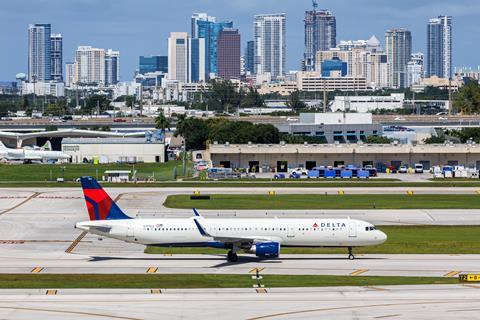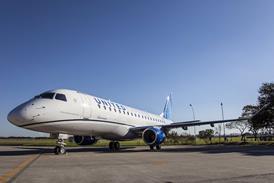This week will see Delta Air Lines kick off the fourth-quarter earnings season as it outlines its October-December and full-year performance on 10 January.
In reporting its third-quarter earnings in October, Delta predicted a record final quarter of 2024, citing strong revenues from “premium” ticket sales in particular.
Alongside United Airlines, Delta appears to have a structural advantage in the US airline market, where low-cost players have been struggling with overcapacity and “cost convergence” with their network carrier peers.

Source: Markus Mainka/Shutterstock
Delta was expecting a record performance in its fourth quarter
The third quarter had seen a widespread shedding of domestic passenger capacity as some US airlines cut routes and frequencies in response to those challenges.
With the global industry on track to fall short of its 2023 profitability unless the fourth-quarter results are unexpectedly strong, North American carriers had a mixed third quarter that saw their aggregate operating profit fall year on year but their net profit come in some $1 billion higher, largely thanks to a one-off benefit in Air Canada’s earnings.
Meanwhile, airlines will be hoping for a quieter time in terms of safety-related news as 2025 gets under way, after 2024 ended with a flurry of incidents.
The most high profile were the crash of a Jeju Air Boeing 737-800 in South Korea, which killed 179 of 181 occupants, and the crash of an Azerbaijan Airlines Embraer 190, which killed 38 out of 67 occupants.
Investigations into both incidents are under way. Key points of interest include the gear-up landing of the Jeju Air jet and the influence of outside factors in the Azerbeijian Airlines crash.
Elsewhere, it only took two days of 2025 for one of 2024’s hot topics to re-enter the news agenda, with Air Baltic saying on 2 January that it is cutting 19 routes from its planned summer schedule, and reducing frequencies on others, attributing the decision to delays in engine maintenance for its Airbus A220-300 fleet.
The latter part of 2024 had seen many airline leaders lament the state of the airline supply chain and the impact it is having on capacity, with most suggesting no end was in sight.




















